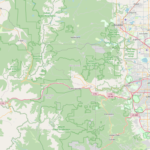In 2024, Geographic Information Systems (GIS) libraries continue to play a crucial role in transforming how we analyze and visualize spatial data. These libraries empower developers, researchers, and analysts to create powerful geospatial applications and solve complex location-based problems. Here, we highlight the top seven GIS libraries that are making waves in 2024.
- GeoPandas: GeoPandas is a Python library that makes working with geospatial data effortless. It extends the popular Pandas library to support spatial operations and data types, allowing users to easily manipulate and analyze geospatial data alongside tabular data. With GeoPandas, tasks like spatial joins, overlays, and geometry operations become intuitive and efficient.
- PostGIS: PostGIS is a spatial database extender for PostgreSQL, enabling spatial queries and analysis on a relational database. It adds support for geographic objects, allowing you to store and query spatial data efficiently. PostGIS is renowned for its robustness, scalability, and advanced spatial functionalities, making it a go-to choice for organizations handling large volumes of geospatial data.
- Leaflet: Leaflet is a lightweight JavaScript library for interactive maps. It provides a simple yet powerful API for creating mobile-friendly maps and visualizations on the web. With a wide range of plugins and a vibrant community, Leaflet is ideal for building dynamic mapping applications with custom overlays, markers, and tile layers.
- Mapbox GL JS: Mapbox GL JS is a JavaScript library for interactive, customizable maps. Built on WebGL, it delivers stunning 3D maps with smooth panning and zooming capabilities. Mapbox offers a suite of tools for map customization, including map styles, vector tiles, and geocoding services, making it a top choice for developers seeking high-performance mapping solutions.
- GDAL: The Geospatial Data Abstraction Library (GDAL) is a translator library for raster and vector geospatial data formats. It provides a wide range of functionalities for data transformation, projection, and analysis. GDAL is widely used in the GIS community and serves as a backbone for many other GIS software and libraries.
- CARTOframes: CARTOframes is a Python package for integrating CARTO, a cloud-based GIS platform, with data science workflows. It provides tools for data visualization, spatial analysis, and data management, allowing users to leverage CARTO’s powerful mapping capabilities within their Python environment.
- ArcGIS API for JavaScript: The ArcGIS API for JavaScript is a comprehensive library for building web mapping applications with Esri’s ArcGIS platform. It offers a rich set of mapping and geoprocessing tools, along with access to Esri’s vast collection of basemaps and spatial analysis services. The API’s flexibility and scalability make it suitable for a wide range of applications, from simple maps to complex spatial analytics.
In conclusion, the field of GIS continues to evolve rapidly, driven by these innovative libraries that empower developers and analysts to unlock the full potential of spatial data. Whether you’re building web-based maps, conducting spatial analysis, or managing geospatial databases, these top seven GIS libraries of 2024 are essential tools to have in your arsenal.









One Comment
It’ѕ great that you are getting thoughts
from thіs paragraph as well as from our dialogue made at this place.